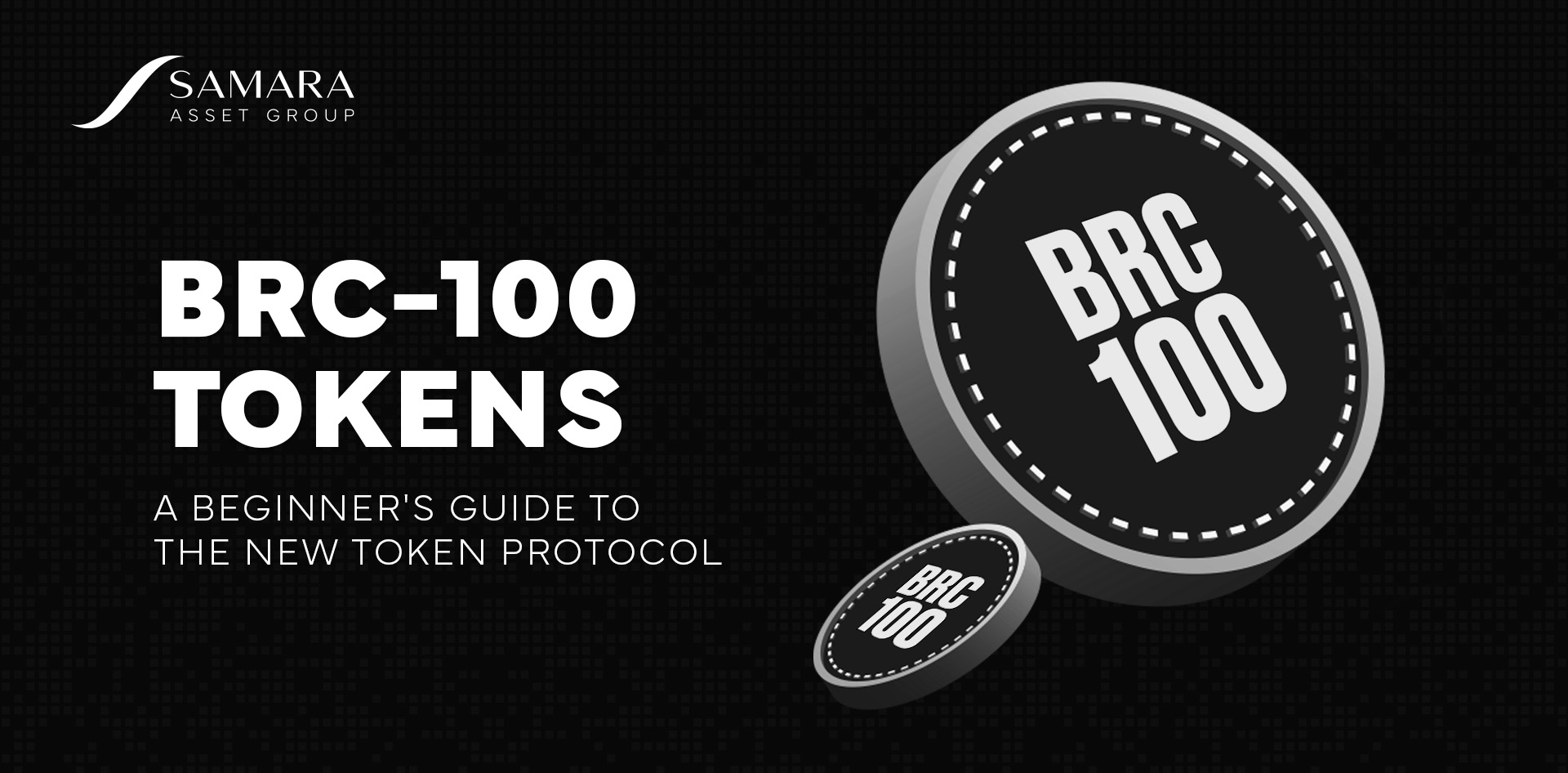Bitcoin
Bitcoin CPI
Venture Portfolio
Funds
Market Insights
Indicators
About
Contact

June 25, 2024





Ordinals Theory has opened up a lot of opportunities for the Bitcoin ecosystem. Developers are using Ordinals as a foundation for innovative protocols and increasing the network’s utility.
Keep reading to learn how the BRC-100 token standard works, compare the protocol to BRC-20 and find out what it brings to the Bitcoin ecosystem.
BRC-100 is a token standard based on Ordinals Theory designed for decentralized applications. The extensible decentralized computing protocol inherits characteristics from BRC-20, including minting, creation, and transaction.
BRC-100 tokens come with computing capabilities and state transitions. You can implement decentralized, trustless, and censorship-resistant applications like SocialFi, GameFi, and DeFi, based on the BRC-100 protocol stack.
BRC-100 explores decentralized computing and allows the integration of new elements and functionalities on Bitcoin. It has a flexible modular architecture with unique features like protocol inheritance and application nesting that allow further development of its core protocol.
The token standard introduces the concept of protocol inheritance, where new protocols inherit the base properties, computing, and operations of BRC-100 while integrating new functionalities.
The BRC-100 extension protocols that inherit directly or indirectly from BRC-100 can only extend the state transitions and computing operations. You can update and upgrade BRC-100 and its extension protocols through improvement protocols.
The BRC-100 protocol and all its extensions are called the BRC-100 protocol stack. All the applications and tokens under the BRC-100 protocol stack are compatible and interoperable with each other. The protocol can interact with other Bitcoin standards and layer 1 chains through vaulting, wrapping, or bridging.
Application nesting allows you to create a child application under BRC-100 and its extension protocols. You can create multiple child applications under one application to complete different computing logic.
BRC-100 is based on the UTXO and State Machine Model, which prevent double spend and extend Bitcoin’s computing capabilities, respectively.
The token standard has a decentralized on-chain governance extension, BRC-101, which defines how BRC-100 applications and their extensions are governed. The BRC-101 governance executions include updating attributes of parent and child applications, stopping applications, and adding child applications.
The BRC-100 protocol has unique functionalities like trading tax and deflation, minting (whitelist, public, and state-based), and burning (whitelist, state, and public destruction) tokens, which are pivotal in token supply management. Minting is a computing operation that creates new tokens while burning destroys tokens and removes them from circulation.
BRC-100 is an open protocol that acts as a foundational framework for future protocols on Bitcoin, whereas BRC-20 is an experimental token standard for fungible tokens.
BRC-100 is an extension of BRC 20, inheriting creation, minting, and transacting with the advanced functionality of complex computation of fungible tokens. While both protocols are Bitcoin token standards, BRC-100 is also a decentralized application protocol.
Both protocols use the UTXO model. However, BRC-100 also has the State Machine Model for extended computing capabilities.
BRC-100 prioritizes interoperability within the BRC-100 protocol stack and when interacting with BTC, Bitcoin standards, and layer 1 chains like Stacks and Ethereum. BRC 20 tokens are compatible with the Bitcoin network but have limited interoperability with other chains.
The BRC-100 token standard encourages developers to build applications and develop the Bitcoin ecosystem to meet different use cases.
The protocol’s extension feature ensures that new protocols on Bitcoin evolve with user demand and are compatible with each other.
BRC-100 facilitates decentralized computing, which can foster the growth and development of permissionless applications on the blockchain. Its decentralized on-chain governance extension can streamline voting and improve consensus and collaboration on the network.
The protocol’s new token trading mechanism, transaction tax and deflation, state machine model, protocol inheritance, and off-chain indexers are advanced features that make it possible to build DeFi solutions on Bitcoin.
The introduction of BRC-100 is an ambitious approach to building complex computation and decentralized applications on Bitcoin. The protocol is a feature-rich standard that caters to projects that necessitate advanced functionalities and allows developers to actively participate in creating Bitcoin-native solutions.
BRC-100 is relatively new and has yet to establish a track record, but its approach to the development of decentralized applications on Bitcoin is an interesting development in the building on Bitcoin movement.